Bone and soft tissue ablation
- PMID: 25053865
- PMCID: PMC4078106
- DOI: 10.1055/s-0034-1373791
Bone and soft tissue ablation
Abstract
Bone and soft tissue tumor ablation has reached widespread acceptance in the locoregional treatment of various benign and malignant musculoskeletal (MSK) lesions. Many principles of ablation learned elsewhere in the body are easily adapted to the MSK system, particularly the various technical aspects of probe/antenna design, tumoricidal effects, selection of image guidance, and methods to reduce complications. Despite the common use of thermal and chemical ablation procedures in bone and soft tissues, there are few large clinical series that show longitudinal benefit and cost-effectiveness compared with conventional methods, namely, surgery, external beam radiation, and chemotherapy. Percutaneous radiofrequency ablation of osteoid osteomas has been evaluated the most and is considered a first-line treatment choice for many lesions. Palliation of painful metastatic bone disease with thermal ablation is considered safe and has been shown to reduce pain and analgesic use while improving quality of life for cancer patients. Procedure-related complications are rare and are typically easily managed. Similar to all interventional procedures, bone and soft tissue lesions require an integrated approach to disease management to determine the optimum type of and timing for ablation techniques within the context of the patient care plan.
Keywords: bone and soft tissue; cryoablation; interventional radiology; microwave ablation; radiofrequency ablation; tumors.
Figures
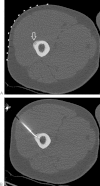

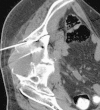



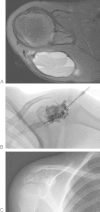
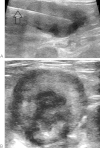
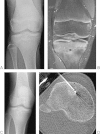


References
-
- Rosenthal D I, Alexander A, Rosenberg A E, Springfield D. Ablation of osteoid osteomas with a percutaneously placed electrode: a new procedure. Radiology. 1992;183(1):29–33. - PubMed
-
- Rosenthal D I, Hornicek F J, Wolfe M W, Jennings L C, Gebhardt M C, Mankin H J. Percutaneous radiofrequency coagulation of osteoid osteoma compared with operative treatment. J Bone Joint Surg Am. 1998;80(6):815–821. - PubMed
-
- Jaffe H L. Osteoid osteoma: a benign osteoblastic tumor composed of osteoid and atypical bone. Arch Surg. 1935;31:708–728.
-
- Greenspan A. Benign bone-forming lesions: osteoma, osteoid osteoma, and osteoblastoma. Clinical, imaging, pathologic, and differential considerations. Skeletal Radiol. 1993;22(7):485–500. - PubMed
Publication types
LinkOut - more resources
Full Text Sources
Other Literature Sources

